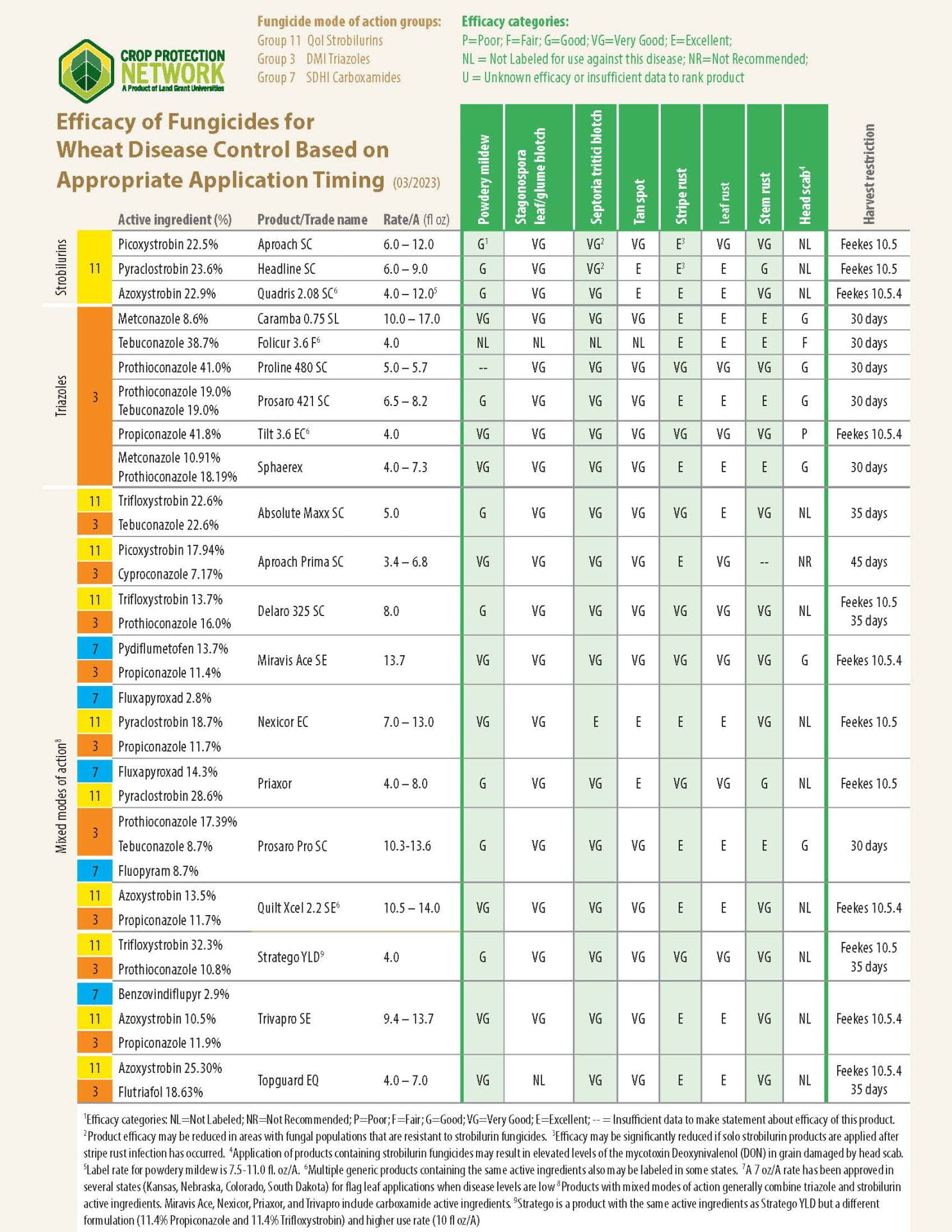Alyssa Koehler, Extension Field Crops Pathologist; akoehler@udel.edu
2023 Wheat Fungicide Efficacy Ratings
Spring is moving right along and the warm weather this week will really have small grains growing. If you are considering use of a fungicide during the season, the 2023 wheat fungicide efficacy ratings are now available. These ratings are developed by the North Central Regional Committee on Management of Small Grain Diseases (NCERA-184) and show results from field-testing across many states over multiple years. This resource is available online at: https://cropprotectionnetwork.org/publications/fungicide-efficacy-for-control-of-wheat-diseases

Fusarium Risk Assessment Tool
Fusarium Head Blight (FHB), caused by species of the fungus Fusarium, is typically the most important disease of small grains in our region. Last year we saw moderate disease pressure across the region. The weather over the next few weeks will determine how large our risk will be this year. The Fusarium Risk Assessment Tool (www.wheatscab.psu.edu), a forecasting model that uses current and predicted weather forecasts to predict FHB risk, is now live for the season (Figure 1). Historically about 70% accurate, this tool aids in assessing FHB risk as wheat approaches flowering and fungicide application decisions are made. The pathogen that causes FHB infects through the flower and rainfall 7 to 10 days prior to flowering favors spore production and increases risk of infection. Within the map you are able to look at predicted risk for the current day or 2, 4, or 6 days out. You can click to adjust anticipated susceptibility based on the hybrid planted. You can sign up to receive text and/or email alerts at https://scabusa.org/scripts/FHB_Alerts/

Figure 1. Fusarium Risk Assessment Tool screenshot of predicted risk from April 4, 2023, www.wheatscab.psu.edu
